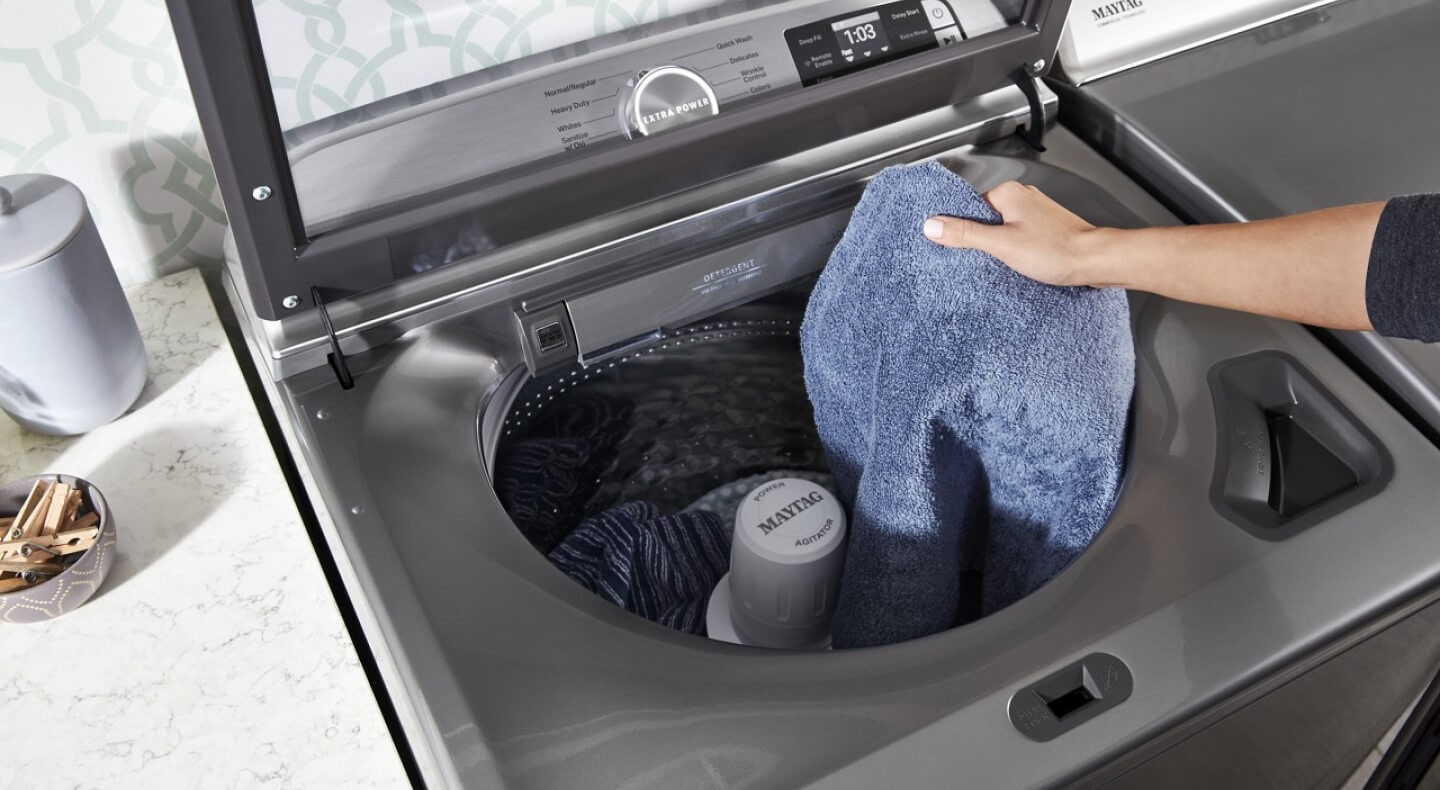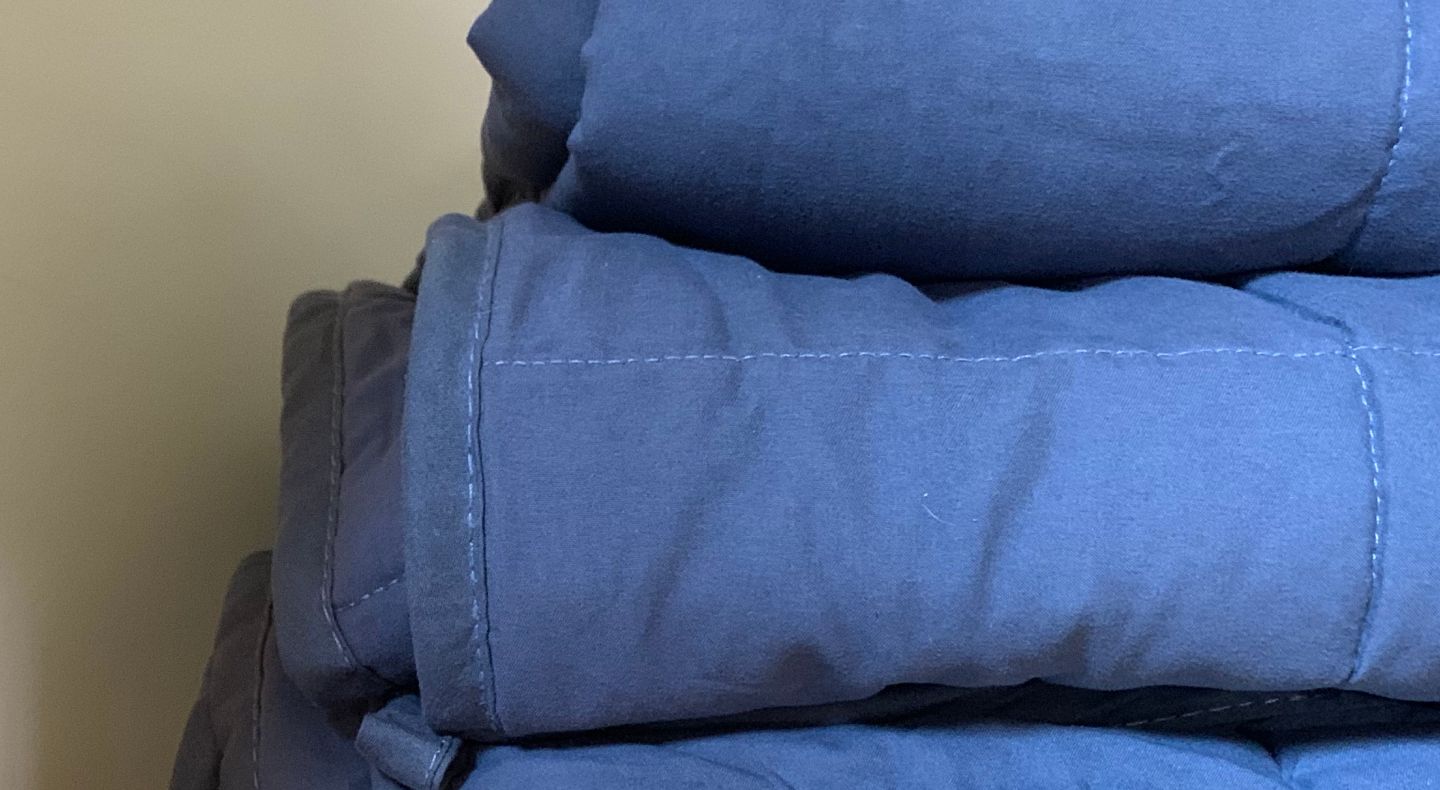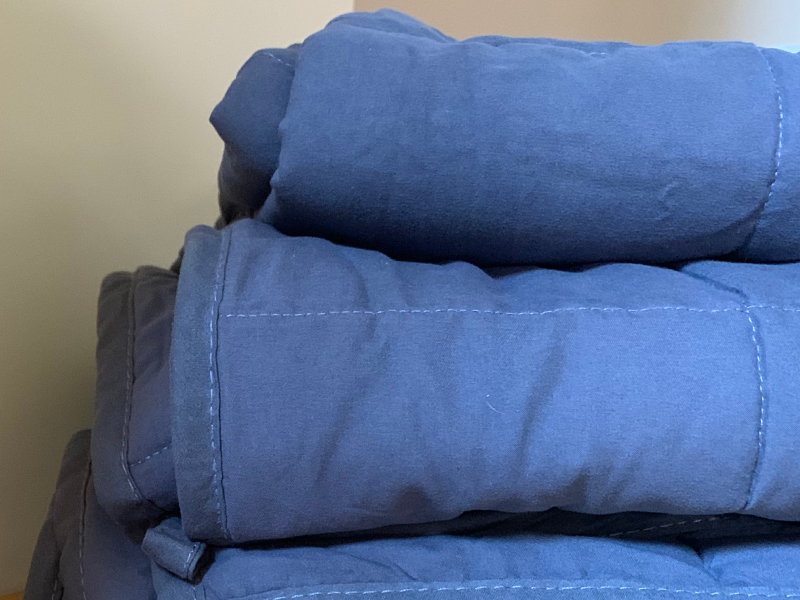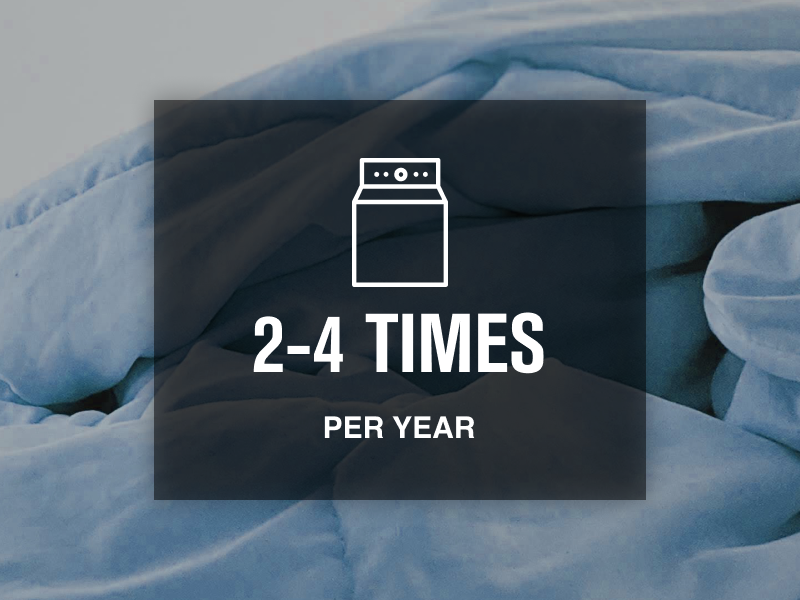
How to Wash & Dry a Comforter in 8 Steps
Can you wash a comforter at home? You can, and you should! Comforters don’t get as dirty as other bedding, but they can harbor bacteria that can affect sleep. That’s why it’s important to know how to wash a comforter the right way. Luckily, washing a comforter, even a down one, is almost as easy as tackling a load of laundry. Learn how to take fewer trips to the dry cleaner or laundromat by washing a comforter at home.
Can I Wash a Comforter in a Washing Machine?
A washing machine with enough capacity can effectively wash most comforters deemed machine washable, but not all residential machines are up to the task. Make sure your washing machine provides enough room for your comforter to move with at least 5.0 cu. ft. capacity. If your machine is too small, you can use a commercial washer at your local laundromat or drop your comforter off at the dry cleaner for a professional cleaning.
Can I Wash a King-Size Comforter?
Clothes and bedding can only clean effectively if they have enough room to move inside of the washer drum. A king-size comforter should have room to move freely in a large capacity washer with at least 5.0 cu. ft. capacity.
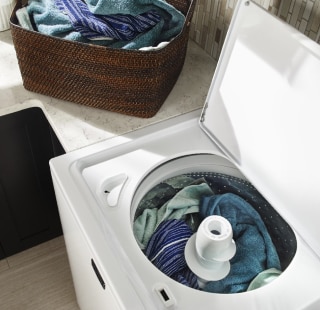
NEED HELP CHOOSING A NEW WASHER?

COMPARE TYPES OF WASHERS
Can I Put a Comforter in the Dryer?
Always consult your comforter’s care tag before machine drying. Most comforters can evenly dry in a large capacity dryer. A dryer with at least 7.0 cu. ft. capacity should provide the space your comforter needs to tumble effectively. If you have a smaller dryer, you can opt for air drying or take your comforter to a local laundromat with a commercial dryer.
How to Wash & Dry a Comforter at Home
Unless the label specifically instructs otherwise—you can wash and dry your comforter at home using a large capacity washer and dryer with a mild laundry detergent. Simply spot clean stains and repair holes or tears, then wash using a bulky cycle with cool or warm water. Drying instructions can vary by comforter, but generally, it’s best to dry using low or no heat.
Comforters are categorized by the type of materials they’re filled with. Popular fillings include down, polyester, wool, cotton and silk. The most common fillers are down or polyester and both can be washed at home. If you’re unsure, check your care tag to learn more about your comforter’s filling.
Similar to a comforter, a duvet is an insert that works as the fill for a protective case or duvet cover. Remember to remove your duvet cover before washing—duvets should be washed separately per our steps below and duvet covers can be washed with other bedding.
Supplies
Mild laundry detergent
Tennis or wool dryer balls (optional)
Stain remover (optional)
Dryer sheets (optional)
Large capacity or commercial washer and dryer

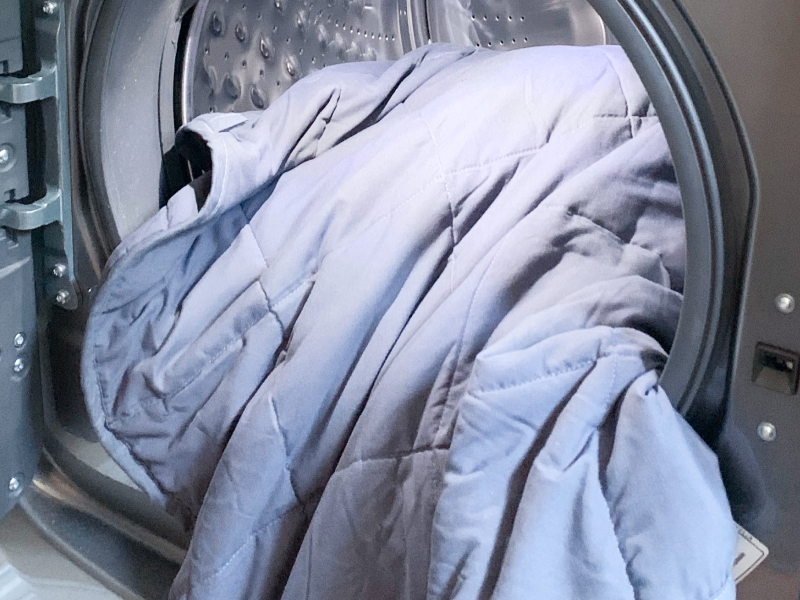
Washing a Comforter in a Washing Machine
The steps below can teach you how to wash a down comforter and keep it in good shape throughout the machine washing process. Prior to washing, be sure to thoroughly read your comforter’s care label for specific instructions. Then, check your comforter for stains or holes, load the comforter, add a mild detergent and select the proper cycle and water temperature settings.
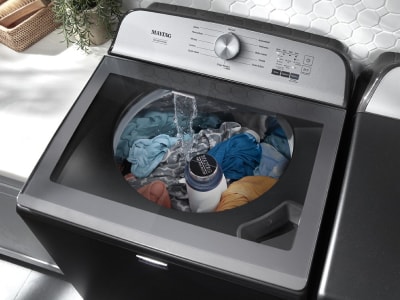
Step 1: Read the Comforter’s Care Label
Before you decide to use your washing machine, check the care label to see the manufacturer’s cleaning instructions. Some materials, such as wool or silk, can be damaged in the washer, and are best left to the professionals.
If the label gives you the okay to machine-wash, be sure to follow any specific instructions, such as using cold water or a specific cycle. While a comforter’s care label should provide information, the next steps for how to wash a comforter will apply to most fabrics and fills.
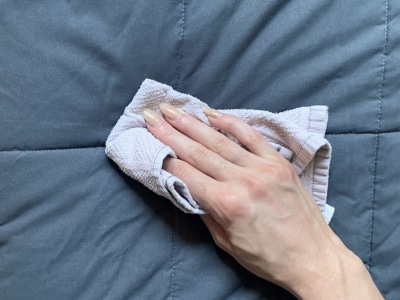
Step 2: Inspect the Comforter for Stains or Holes
Examine your comforter for tears, loose seams, or other damage, and make repairs before you wash it. Any tears or loose thread could snag and cause even more damage. Stains should also be treated before washing. Be sure to move the filling away from the stained area before treating the comforter.
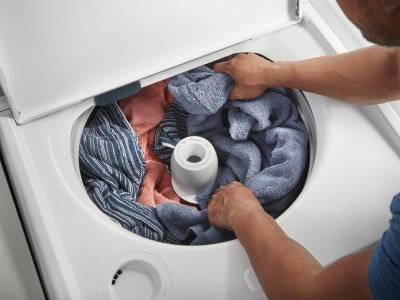
Step 3: Load the Comforter into the Washer
Place the comforter into your washing machine carefully. Whether you have a front-load or top load washer, your comforter needs room to agitate and tumble – it can’t get clean otherwise. If you have a top load washer with an agitator, let the comforter fall loosely around the post and try to keep the load balanced.
Use a large capacity washer that’s big enough to accommodate your comforter with ample room to spare.
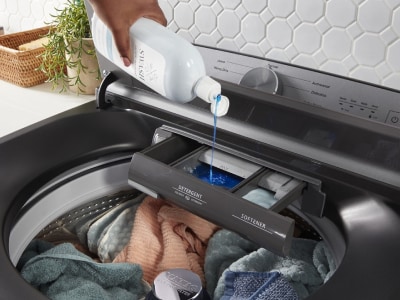
Step 4: Add Detergent
Add a small amount of mild, fragrance-free detergent without any additives to the washer tub. Be sure to check your comforter’s care tag before including extras like fabric softener to the load.
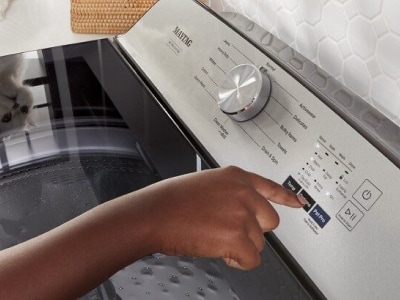
Step 5: Select Water Temperature & Cycle Settings
With the exception of wool or silk comforters—which are best cleaned by professionals—the recommended cycle selection for a down, down alternative or cotton-filled comforter is typically the same. Comforters should generally be washed on a bulky or bedding cycle using cool or warm water. If your washer allows, select the extra rinse option to completely remove soap residue from the comforter.

LARGE CAPACITY
TACKLE LARGE LOADS OF LAUNDRY
This Maytag® large capacity washer is large enough to handle even your largest loads of laundry with ease
Drying a Comforter in a Dryer
You can evenly dry your comforter by carefully loading it into the dryer, selecting a bulky cycle setting and customizing the cycle temperature—if possible—to a low or no-heat setting. Rebalance and fluff your comforter and reload it into the dryer periodically to promote even drying. Finish the process by allowing it to hang and air dry for several hours.
It's imperative to thoroughly dry a comforter. Expect the drying process to take around two to three hours for the comforter to get completely dry. Due to their large size and bulky fill, drying a comforter can take a few extra steps. Follow the steps below to learn how to dry a comforter.

Step 6: Load the Comforter into the Dryer
Bulky bedding like a comforter needs room to move around for uniform drying. If possible, dry your comforter on a cycle designed for bulky items and customize the cycle to dry with low or no heat, unless the label says otherwise. Add two or three dryer balls to the load so that the filling moves around as it dries. This allows warm air to circulate more efficiently which may help reduce drying time. It may be best to avoid using dryer sheets that contain fabric softener, but this varies by material type, so be sure to reference your comforter’s tag before you add any to the load.
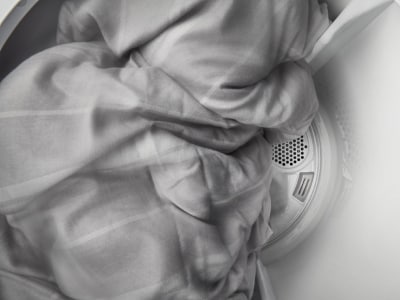
Step 7: Dry Your Comforter Thoroughly
To ensure the comforter dries evenly, remove the comforter from the dryer every half hour or so and fluff to redistribute the filling. Return to the dryer and continue the cycle until it is dry. Some dryers, such as Maytag® dryers with Advanced Moisture Sensing, monitor inside moisture and air temperatures to help loads get evenly dry.
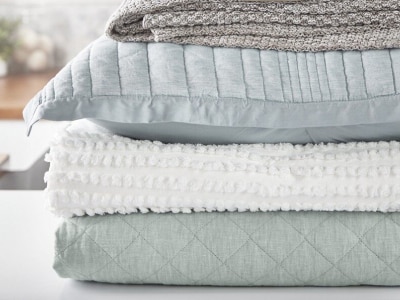
Step 8: Complete the Drying Process by Air Drying
When the comforter feels almost dry, allow it to hang so that fresh air can circulate around it for a few hours and ensure the drying process is complete before putting it on the bed.

Maytag® dryers
Gentle yet powerful drying action
Let your Maytag® dryer do the heavy lifting with parts and features that get the job done
How Often Should You Wash Your Comforter or Duvet?
Unless you spill something or use your comforter without a barrier layer like a sheet, cleaning your comforter 2-4 times per year should be enough. If your comforter is seasonal, it’s recommended you go through the cleaning process before and after each storage. However, a duvet cover or blankets that come in direct contact with skin should be washed more often. Learn how to wash electric blankets and weighted blankets in the washer as well.
Need a Bigger Washer for Comforters and Other Large Items?
If you’re in need of more space to wash a comforter or duvet, consider a large capacity front load, top load impeller or top load agitator washer to meet your laundry needs. Better yet, tackle large loads with a matching large capacity dryer from Maytag brand. Many Maytag® large capacity washers are big enough to take on the large loads you throw at them.

